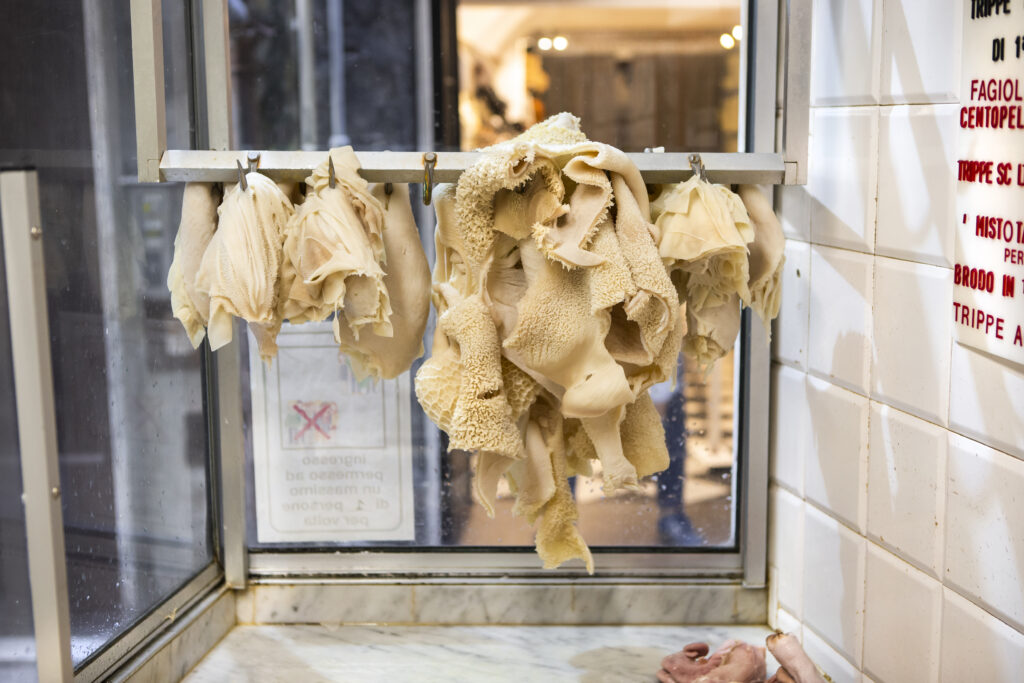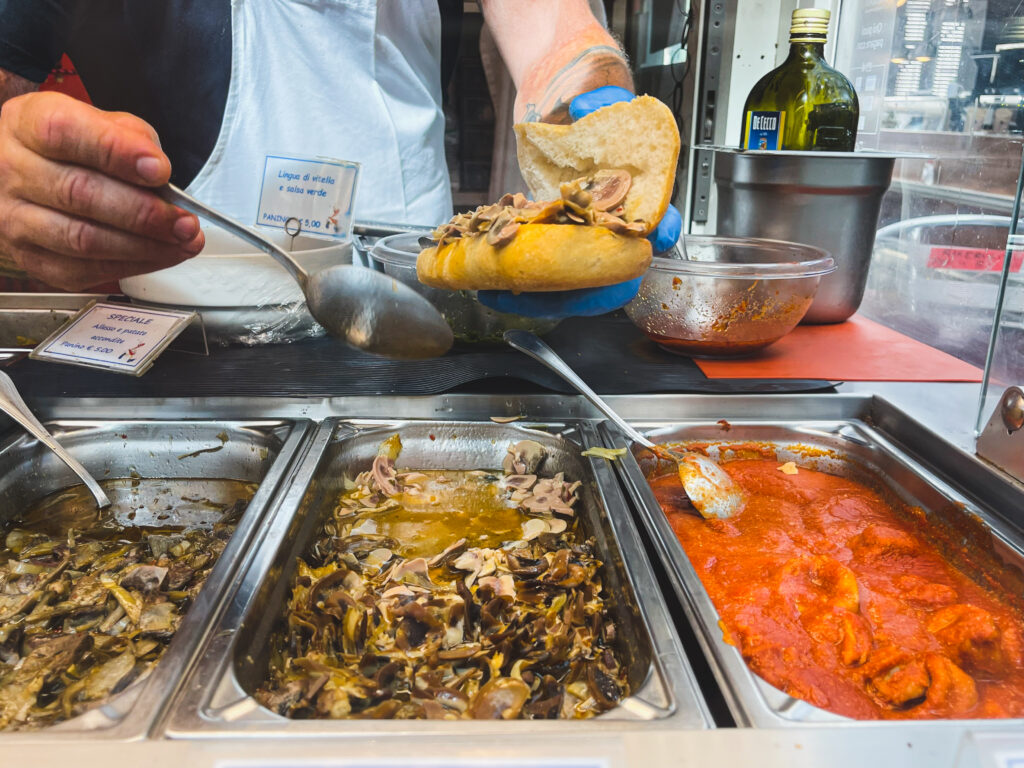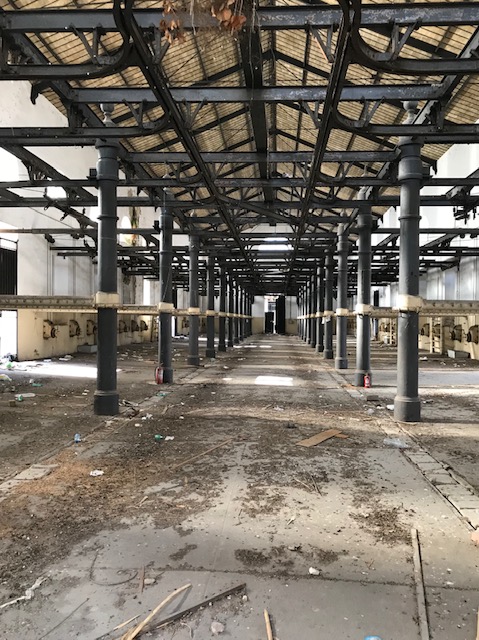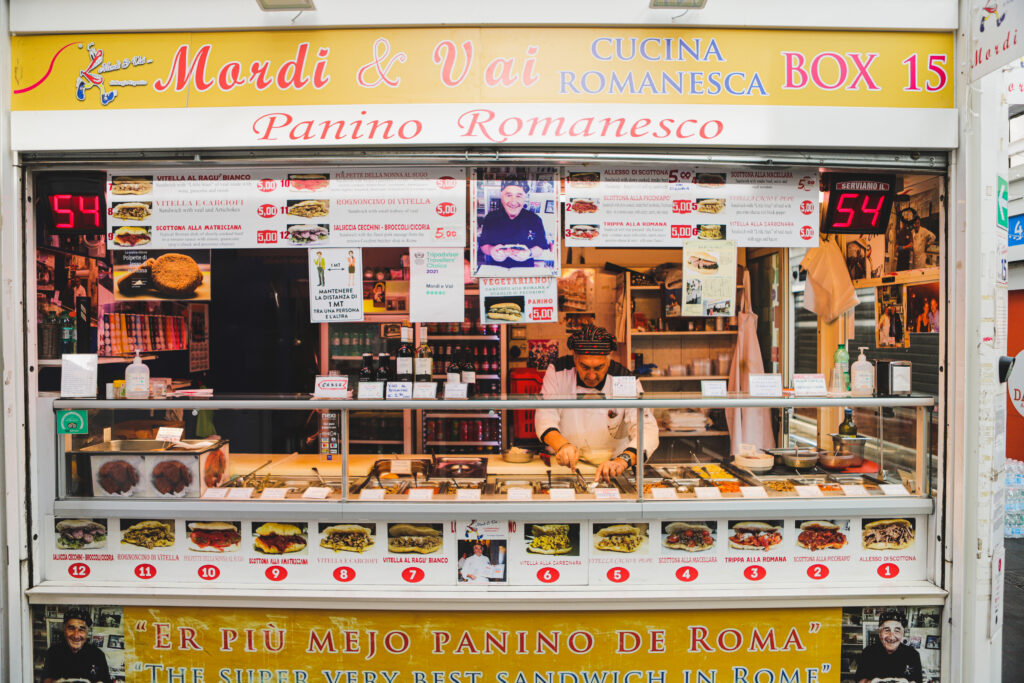The establishment of the Butcher’s House from 1891 in the Testaccio district of Rome had an important impact on Roman cuisine. The use of ‘quinto quarto‘ meat or the fifth quarter of an animal spread like wildfire in the culinary traditions of Rome. Quinto quarto is what remains of the animal after cutting off the better parts; the two front quarters and the two back quarters. This fifth part was offal such as the tail, head, legs and other external waste. They became some of the main ingredients of Roman recipes.
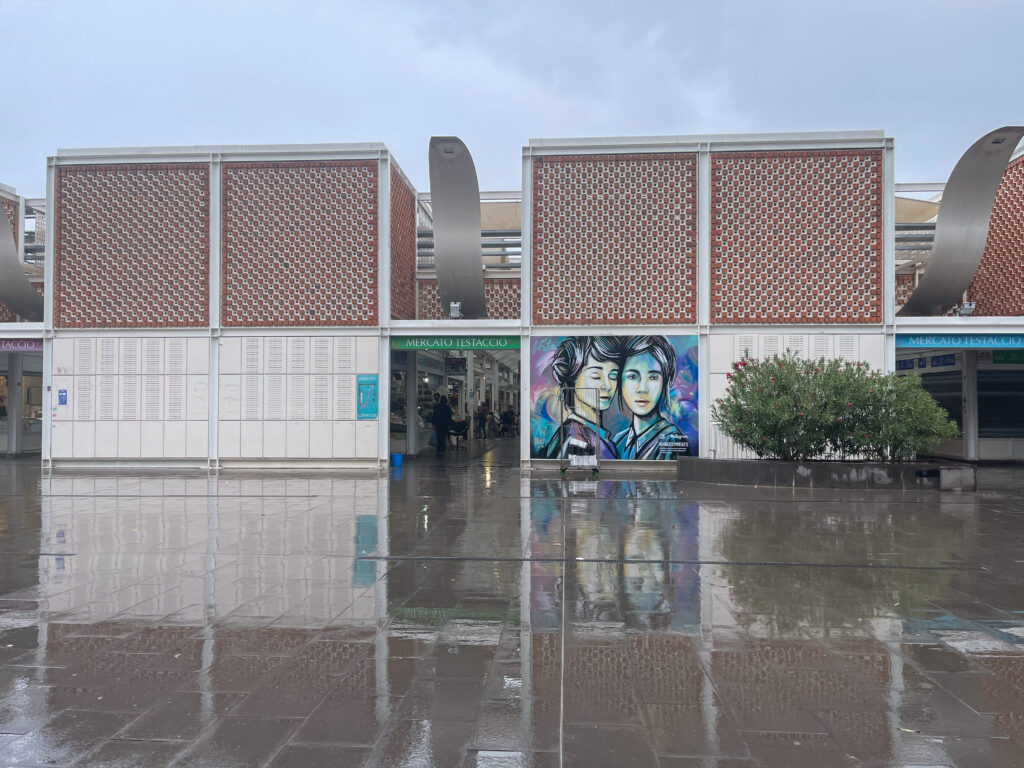

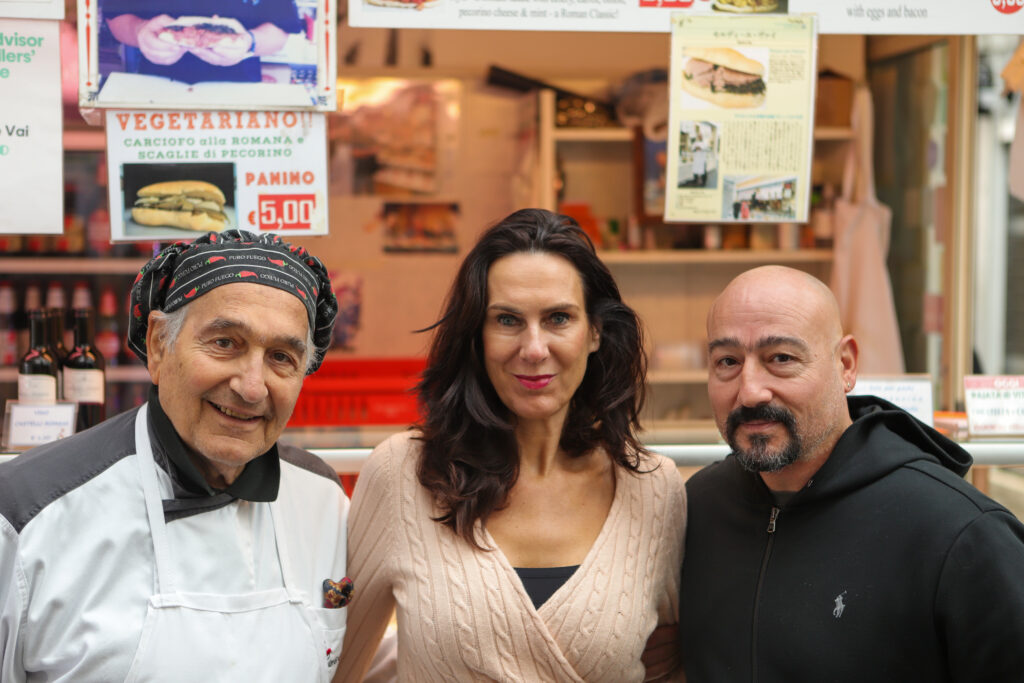
With Sergio and Giugliano Esposito of ‘Mordi e Vai’ or ‘Bite and Go’ in Testaccio
In addition, slaughterhouse workers were also paid with the lesser pieces such as tongue, liver and lungs. In turn, they sold them to taverns that started preparing dishes with this slaughterhouse waste. This led to the creation of dishes such as coda alla vaccinara (stewed beef tail), trippa alla romana (beef stomach, especially the three front stomachs) and animelle fritte dorate (deep-fried intestines).
